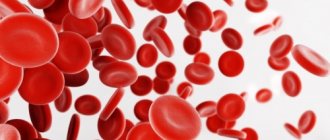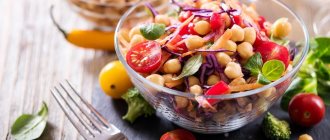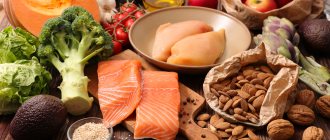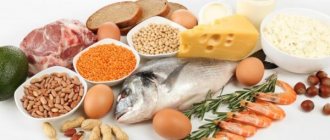This disease leads to metabolic disorders of all types: carbohydrates, fats, proteins. The disease is caused by a lack of the hormone insulin, which causes an increase in blood sugar levels. At the same time, it also appears in the urine.
It should be remembered that diabetes never comes suddenly - it manifests itself gradually, signaling itself with a number of symptoms that we sometimes do not notice. A condition when the body does not need treatment, but prevention is called prediabetes. It develops with insufficient absorption of glucose.
Check yourself - if you have at least one of the symptoms, you need to see a doctor:
- Excess weight.
- Excessive dry mouth, constant thirst.
- Decreased visual acuity.
- Increased pressure.
- Frequent urination.
Increased blood pressure and obesity are the so-called metabolic syndrome. It should be the first alarm signal for those who monitor their health. The first stage of the disease requires immediate and complete treatment.
Who's at risk
The development of diabetes is promoted by:
- Stressful situations, neuroses.
- Poor or excessive, irregular nutrition.
- Incorrect diet (with a predominance of fatty, fried, sweets, flour, fast food).
- Bad ecology.
- Sedentary lifestyle.
Physical inactivity leads to the accumulation of fatty deposits, which gradually turn into adipose tissue. The latter eventually loses sensitivity to insulin, the hormone that controls blood sugar levels. It starts to grow and diabetes develops.
That is why obese people are most susceptible to this disease. In addition, do not forget about hereditary predisposition.
To identify the disease in the early stages or prevent its development, you need to consult a doctor in time. To do this, you need to assess whether you are at risk. Listen to your body. If alarming symptoms have been haunting you for more than a day, make an appointment with a specialist and take a blood test to check the glucose content.
Following simple rules will help you avoid prediabetes:
- Adjustment of the daily routine - proper sleep, mandatory physical activity.
- Changing the diet - excluding fatty, fried, sweets, pickles, smoked foods, and semi-finished products from the menu.
Nutrition for a nursing mother: from 2 months to six months
Starting from 3 months, you can gradually introduce some foods that were previously prohibited into your diet. After consuming each of them, you need to carefully monitor your baby’s reaction: if he has even a hint of an allergy, this product should be excluded and tried again in about a month. It is possible that the allergic reaction was simply a symptom of the immaturity of the baby’s digestive tract. Now you can add to your menu:
- Pearl barley, oatmeal, wheat and semolina porridge;
- Fresh fruits (not tropical and not containing red pigment);
- Juices (from green and yellow apples, soft pumpkin, carrots or beets);
- Sour cream;
- Morse made from blueberries, lingonberries, cranberries, rose hips.
You can also try to gradually include fresh onions and nuts in your diet (except pistachios and peanuts, which should be tried with caution, a couple of pieces a day). But the listed products will affect the taste of the milk, which the baby may not like. Therefore, it is important to know when to stop and be attentive to the behavior of the baby. Although scientists say that a baby’s eating habits begin to form in the womb: when the baby gradually swallows amniotic fluid, then his first acquaintance with his mother’s diet occurs.
Can I drink milk?
You should still be careful when handling cow's milk protein, as it often causes an allergic reaction in children. It is this that can cause abdominal pain in a child, so you should be careful when handling cow's milk products. Alternatives include goat milk products, including cottage cheese and plain yoghurts.
In addition to proteins, fats and carbohydrates, milk contains some vitamins and microelements, and its especially useful components are calcium and phosphorus. If, having included milk in your diet, you have not noticed a negative reaction in your baby, you can continue to consume it. Fermented milk products, such as kefir and cottage cheese, are especially useful now. A convenient option may be Agusha curd, rich in calcium and vitamin K2, which is necessary for the absorption of calcium by the bones.
At 4–6 months of life, the baby already tries his first complementary foods. At this point, you have generally learned how he reacts to milk composition based on changes in your diet. Now you can gradually begin to expand your menu by introducing beans, potatoes, mild cheeses and fish.
But remember that the meat of some types of fish may have a high content of heavy metals. Their concentration in the meat of shark, marlin and swordfish can significantly exceed the permissible limit; such fish should be completely excluded from the diet. Varieties such as mackerel, pink salmon, sockeye salmon, trout, and salmon can cause allergies. From the 6th month, you can begin to gradually introduce fish into the menu, but be sure to carefully monitor the baby’s reactions.
And of course, you should not eat raw fish, sashimi, or sushi. The pathogens with which she can be infected are extremely dangerous for both mother and baby, and medications that destroy the infection are incompatible with breastfeeding.
Nutrition for diabetes: prohibited and permitted foods and “bread unit”
Glucose is a monosaccharide or simple carbohydrate. Is it really necessary to exclude foods rich in carbohydrates from the diet forever - especially if the diagnosis has already been made? No, because nutrition must be balanced.
There is only one rule regarding products containing substances that can harm patients. The prescribed daily intake must be strictly followed. Without special reference points, it is very difficult to calculate it. But there is a so-called “bread unit” - a concept that should be known to all diabetics.
“Bread unit” is a measure for carbohydrate-containing food. It is used for any products - both mono and polysaccharides in the composition. One unit is equal to 12-15 g of essential compounds absorbed by our body. When consuming this dose, the glucose level in our blood increases by 2.8 mmol/l. In this case, we need exactly 2 units of insulin to absorb nutrients.
The norm was introduced specifically for diabetics, for whom it is so important to constantly ensure that the amount of carbohydrates introduced into the diet corresponds to the insulin administered. If the balance is not maintained, the following conditions may develop:
- Hyperglycemia is an increase in blood glucose levels - up to 8 mmol on an empty stomach, more than 10 mmol after meals. Signs: dry mouth, weight loss, apathy, weakness, increased blood pressure.
- Hypoglycemia – a decrease in an important indicator – below 3.3 mmol/l. Signs: pallor, dizziness, loss of consciousness, weakness in the legs, rapid heartbeat, hunger, sweating, trembling, pale skin.
- Experts introduced the following ratio: 1 unit of bread is equivalent to 30 g of bread, half a glass of porridge (barley or buckwheat), one sour apple.
- The daily norm for a person with diabetes is from 18 to 25 units. How to take them correctly?
- Divide the total amount into several meals: breakfast, afternoon snack, lunch, snack, dinner. The largest share should be for main meals (about 3.5 units), 1-2 each for intermediate or snacks.
- Most foods containing polysaccharides (plant foods) should be eaten in the first half of the day.
Patients are concerned with the questions of what foods can be consumed for diabetes and which cannot be eaten, what kind of nutrition can be called correct for high glucose? To answer them, you need to decide on what principles the new diet is based, what the new regime should be.
- It is necessary to eat food at a certain time. You can't skip breakfast, lunch and dinner. The approximate scheme is as follows: first breakfast - at 8 or 9, snack - at 11 or 12, lunch - at 14-15, afternoon snack - 17, dinner, divided into two parts - at 19 and 21 or 22 hours. If you stick to this regimen, you can avoid the problem of hypoglycemia. This condition usually occurs three or four hours after insulin is administered.
- A diabetic should carefully monitor how much he weighs. Calculating your optimal weight is simple: to do this, you need to subtract 100 from your own height in centimeters. For example, the norm for a person who is 167 cm is 67 kg. Obesity should not be allowed - it leads to decreased sensitivity to insulin.
- Another principle of the diet is that nutrition should be complete. High blood sugar is not a reason to give up carbohydrates. When creating a menu, it is necessary to pay special attention to polysaccharides and products containing them: buckwheat, plant foods (vegetables, herbs). For some, it's especially difficult to forget about sugar. Instead, you can and should use natural substitutes that will help sweeten dishes and return them to their usual taste. Stevia will be a good alternative to forbidden sweets.
- Too small or insufficient portions are not allowed; food should promote satiety and not increase hunger or irritate the appetite.
- Diabetes is often accompanied by obesity. Proper nutrition for this disease should be aimed at reducing body weight. Special dietary products based on amaranth flour help with this, they help overcome the craving for overeating, are suitable for snacking, and do not lead to an increase in blood glucose levels.
- Particular attention is paid to the amount of fat in the diet. Their complete absence is unacceptable, since they are of great value to the body. However, it is necessary to control the consumption of foods that contain them. Exceeding the norm leads to weight gain and the development of atherosclerosis. The amount of fat should be approximately 30%. These are mainly vegetable oils (sunflower, flaxseed, olive, amaranth).
- Products that contribute to an increase in blood sugar are excluded: confectionery, almost all fruits, jams, confiture, preserves, chocolate, flour, dairy with a high percentage of fat, syrups, lamb, pork, margarine, spread, some cereals.
- The diet must contain food containing fiber - it does not provoke an increase in glucose, and helps to compensate for the deficiency of nutrients and energy.
Proper nutrition during sports
As mentioned above, physical activity without proper nutrition greatly loses its effectiveness. Below are the basic rules that will help you determine your diet and recover after exercise.
Follow your diet
Eating should be no later than 2 hours before training and no earlier than 30 minutes after training. You should not fast before or after training. The body needs a supply of nutrients and microelements. A small post-workout snack is a good way to give your body a quick source of energy. Then, after a couple of hours, you need to take a full meal.
Don't forget to drink water
During intense exercise, the body loses a lot of fluid. You need to replenish the water and mineral balance in the body and prevent dehydration. During training, you can drink a small amount of liquid, and after training, you can completely replenish the losses.
A good option would be mineralized water - it will simultaneously quench your thirst and replenish your mineral balance.
Snacks
A quick meal 30-40 minutes after exercise is called a snack. The best foods for them are those that quickly restore energy: bananas, cereal bars, fruit purees, juices.
Protein intake
Muscles need protein to recover. Add protein foods to your diet, regardless of the type of exercise you receive. In the morning, a good option would be omelet or eggs, which contain protein that helps muscles recover faster. For dinner, you can eat fish rich in protein and omega-3, such as salmon.
Drinks, supplements and protein shakes
A person cannot always get the required amount of vitamins, dietary supplements and microelements from regular food. In this case, various dietary supplements and protein shakes come to the rescue.
For those who are intensely involved in strength sports and want to pump up their body faster, you can try adding a protein shake to your diet. You can buy the powder version, or you can make it from natural products at home. You will need milk, banana, yogurt and oatmeal.
What foods can and cannot be eaten with diabetes: details about carbohydrates
Carbohydrates are the main source of fat. That is why they are included in the diet with caution. But this is not a reason to replace these substances with proteins or fats - our body needs them for health and normal functioning.
When creating a new diet, it is advisable to exclude fast carbohydrates and prefer slow ones. The former are found in the following products:
- Sweets.
- Bakery products.
- Pasta.
- Starch.
- Potato.
- Fast food.
- Fast food.
- Cookie.
Simple carbohydrates are prohibited, but complex carbohydrates found in vegetables are not. So switch to plant-based foods - it will help you stay healthy and energetic.
Ideal for diet:
- Cabbage (broccoli, Brussels sprouts, cauliflower, white cabbage).
- Laminaria (sea kale).
- Tomatoes (in limited quantities).
- Raw onions or green onions in salads.
- Mushrooms.
- Beans in pods.
- Various greens.
- Cucumbers.
- Celery.
- Patissons.
- Eggplant.
Breakfast after a workout to burn fat
During the drying period, it is better to give preference to foods high in protein and complex carbohydrates. Eating after a workout is a must! The supply of nutrients will close the anabolic window and help form an expressive muscle profile. The following foods are excellent for this purpose.
- Lean boiled (steamed) beef – 200 – 300 g.
- Fresh vegetables - in unlimited quantities.
- Boiled chicken breast – 300 – 400 g.
- Low-fat dairy products – 300 – 400 g.
- Seafood and lean fish – 300 – 400 g.
- Boiled eggs and omelettes – 2 – 3 eggs per serving.
Interesting to know! The most complex carbohydrates are found in nuts, dried fruits, cereals and seeds. They perfectly satisfy hunger and are indispensable when drying muscles.
Foods that lower blood sugar in diabetes
These are all foods with a glycemic index below 50 percent. They do not lead to hyperglycemia and do not allow glucose levels to drop to a critical level.
- Amaranth
- Garlic
- Beet
- Jerusalem artichoke
- Asparagus
- Artichokes
- Broccoli
- Hazelnut
- Seafood
- Kelp
- Avocado
The list goes on. All these are useful products that lower blood sugar in diabetes. They are high in fiber, which slows down the absorption of substances that contribute to hyperglycemia. Their action results in the smallest dose of glucose entering the blood. In addition, vegetables, herbs and permitted nuts contain many valuable vitamins and microelements that normalize the functioning of all organs - from the heart to the pancreas.
Next up is the “black list”, which includes what doctors do not recommend eating to all those who were forced to go on a special diet.
What can nursing mothers eat from 0 to 2 months?
- Apples, pears, bananas (baked)
- Cereals (buckwheat, barley, corn, rice)
- Soups - vegetarian
- Quail eggs
- Cereal products: durum wheat pasta, grain and bran bread
- Drinks: herbal or weak black tea, fruit drinks, dried fruit compotes
- Fermented milk products (kefir, plain yoghurts, cottage cheese, fermented baked milk)
- Steamed vegetables (potatoes, carrots, beets, light pumpkins)
- Quail eggs
- Biscuits
What foods increase blood sugar: list of prohibited foods for diabetes
- Sweets, honey, confectionery products made from puff pastry and refined white flour - it is recommended to find a healthy alternative for them - stevia-based treats in moderation.
- Pastries and bread made from white flour are prohibited. It can be replaced with rye or bran, but in this case the daily requirement will be approximately 325 g.
- Salted and pickled vegetables and potatoes are excluded from the diet.
- All store-bought sauces are high in sugar, preservatives, fat, pepper and salt.
- Sweet fruits and berries, freshly squeezed juices.
- Whole and skim milk, condensed milk.
- Various types of canned food, instant food, packaged snacks.
- Syrups (maple, corn) and other easily digestible carbohydrates.
- Fatty meats and fish, lard, smoked meats.
- Any soups containing potatoes and rice, in fatty and strong broths.
It is also necessary to completely exclude from your diet foods containing dangerous trans fats:
- Margarine.
- Spread
- Fast food.
- Cookie.
- Cakes.
- Chips.
- Mayonnaise.
- Semi-finished products.
Here are the foods you need to exclude if you have diabetes - check out the list of prohibited foods to easily create the right menu. Diet is the main means of eliminating the symptoms of the disease and allowing you to stay in good shape.
We remind you that everything that is on the “black list” must be excluded from your diet forever - eat right and you will not have to deal with the consequences of your own weakness. If you look closely at the foods that are allowed, you will see the ingredients for a varied, tasty and filling diet. This:
- Lean meat, poultry, fish.
- Eggs, seaweed.
- Various seafood.
- Butter (butter, vegetable), cheese.
- Mushrooms.
- Some cereals, fruits, berries.
- Vegetables are mostly green.
Healthy breakfast options
So, let's move on to the most delicious and interesting. We consulted with athletes, and they told us how to eat breakfast correctly and at the same time enjoy it. Check out the TOP 5 complete and rich breakfasts from the running elite:
- Oatmeal with banana and dried apricots. Preparing this breakfast will take 10 minutes and will provide benefits for 5 hours in advance. Just boil the required amount of porridge, cut a banana and dried apricots into it. Fruits will make it sweet and it will give you energy.
- Sandwiches with red fish. Lightly salted red fish contains many beneficial properties, perfectly satiates and relieves hunger. Place the fish on whole grain bread, sprinkle with lemon, brew tea - a quick breakfast is ready!
- Omelette with chicken breast. A protein bomb in the morning is just the thing for anyone. Beat two eggs, add 2 tablespoons of milk, pour the mixture into a frying pan with a drop of olive oil. When the omelette is slightly set, add the chicken and sprinkle with cheese. Serve with vegetables and a cup of homemade juice.
- Cottage cheese with nuts, honey and fruits. You can't think of anything simpler than breakfast. Cut your favorite fruits into cottage cheese, add a spoonful of honey, and add nuts if desired. Enjoy a pleasant and light taste.
- Muesli – 3 minutes and a healthy breakfast is ready, the main thing is to find a healthy composition or prepare it yourself. Pour milk, yogurt or kefir over your prepared breakfast. Out of 5 breakfasts, muesli will be digested faster, so be prepared that you will want to eat in the next 2-3 hours.
Is it difficult to prepare breakfast? - not at all! Today we found this out in practice. Therefore, prepare your first meal quickly, healthy and tasty. You will notice how much your body's condition has improved, you will feel a surge of vigor and ideas, and most importantly, awaken your dormant metabolism. Breakfasts are important, breakfasts are necessary!
Add AN to your sources so as not to miss important events - Yandex News
- Antidiplomatico: Russian Tu-22M3 missile carriers can destroy the NATO fleet in the Mediterranean Sea in two hours
- Paris has the bit between its teeth and is ready to finally quarrel with Moscow
- Tourists from St. Petersburg, Yakutsk and Yekaterinburg died while climbing Elbrus
- Have they brought a “Trojan horse” into the State Duma?
- The commander of the Ukrainian Navy, Gaiduk, has developed a plan to defeat Russia in the Black Sea.
- Maslenitsa week: how many pancakes can you eat and how to cleanse your body afterwards
- What is healthy to eat for breakfast?
Become a member of the CLAN and every Tuesday you will receive the latest issue of “Arguments of the Week” with a discount of more than 70%, along with exclusive materials not included in the newspaper. Get premium access to a library of the most interesting and popular books, as well as an archive of more than 700 published issues for FREE. In addition, you will have the opportunity to benefit from free legal advice from our experts for a whole year.
- Enter your email address, then select any convenient payment method for your annual subscription
- Scan the QR. In the Sberbank Online application that opens, enter the annual subscription cost (490 rubles). Then send the confirmation code by email
Or
What fruits can you eat if you have diabetes?
Unfortunately, you will have to give up sweet fruits (bananas, mangoes, peaches). Sour apples (1 fruit per day) and oranges are allowed. If you want to treat yourself to berries, choose only those that contain the least amount of fructose - for example, gooseberries. Black currant is useful, but you have to forget about raspberries - sweet and dangerous for patients suffering from hyperglycemia and its companion - hypoglycemia.
What to eat if you have high blood sugar: diet for diabetes
The menu should include:
- Diabetic bread, rye and bran bread.
- Vegetable soups, including cold ones. The broth should not be strong.
- Dishes made from lean meat and poultry.
- Kefir, bio-yogurt, acidophilus and other low-fat fermented milk products (but not low-fat).
- Unsalted cheese.
- Eggs, light omelettes. Protein is recommended, yolk consumption is limited.
- Dishes from cereals (with restrictions within acceptable limits). You can prepare porridge from buckwheat, pearl barley, oatmeal. Not allowed: from semolina, rice.
- Low-fat fish - either baked (in the oven, grilled) or boiled.
- Green vegetables: raw, steamed, boiled, baked. Attention: heat treatment increases the glycemic index of the product.
- Fruits: sour apples, oranges.
- Sweets: jellies, candies, mousses and other treats containing stevia and other substitutes are allowed.
- Recommended drinks: tea, diluted vegetable juices, decoctions based on herbs and dried rose hips.
- You can add butter to first and second courses, or use vegetable oil as a salad dressing.
- Sauces: only homemade, salty and spicy are excluded, low-fat ones are allowed, based on a decoction of vegetables and herbs.
This is what a daily menu for a diabetic might look like:
- Breakfast (1) – boiled lean meat, green apple, tea.
- Breakfast (2) – steamed omelet or soft-boiled egg.
- Lunch – vegetarian cabbage soup without potatoes, baked fish.
- Afternoon snack – a glass of kefir, an apple or a handful of black currants.
- Dinner – boiled beef with asparagus.
- At night - kefir.
If one disease is accompanied by another (gastritis, duodenitis, ulcer, colitis), it is necessary to maintain the proposed diet, but avoid irritation of the stomach and intestinal mucosa, follow special rules for preparing dishes - steamed, mashed.
Do not forget that you should adhere to a fractional diet - 5-6 times a day. Failure to comply with the regimen can lead to hypo- or hyperglycemia. Be careful: do not skip main and additional meals and do not overeat.
In this article, we tried to talk in as much detail as possible about what you can and can’t eat if you have high blood sugar, gave the principles of a diet for diabetes and lists of foods that are prohibited and allowed. Do not forget that proper nutrition will help strengthen the body and prevent the development of the disease - create a menu taking into account the doctor’s recommendations.
Author: Di&Di Corporation
What can you eat after your morning workout?
The diet for morning workouts should include foods high in proteins and carbohydrates. First of all, these are nuts, legumes and dairy products.
In order to quickly replenish the glycogen lost by the body's muscles, it is recommended to eat foods with a high glycemic index. These are the so-called “fast” carbohydrates. When consumed, insulin is produced, which stops the effects of adrenaline and cortisol, which continue to destroy muscle fibers after exercise.
Foods with a high glycemic index that you can eat immediately after a workout include the following:
- Boiled or baked potatoes.
- Rice porridge or rice noodles.
- Muesli with raisins and nuts.
- Oatmeal.
- Bananas.
- Yogurt.
- Millet.
- Turnip.
- Dates.
- Swede.
- Parsnip.
During the anabolic window, consuming foods high in protein and low in fat is encouraged.
- Lean lamb.
- Lean beef.
- Skinless chicken.
- Chicken by-products – liver, heart, stomach.
- Lamb, beef or pork liver.
- Pork and beef kidneys.
- Beluga.
- Squid.
- Crabs.
- Shrimps.
- Pollock.
- Blue whiting.
- Horse mackerel.
- Cod.
- Tuna.
- Trout.
- Oysters.
- Low-fat dairy products.
Interesting to know! Scientists have found that the duration of the anabolic window, its intensity and anabolic response are much higher in beginners and young athletes. While in more experienced athletes and older people it may have subtle manifestations and not be accompanied by a “brutal” appetite.










